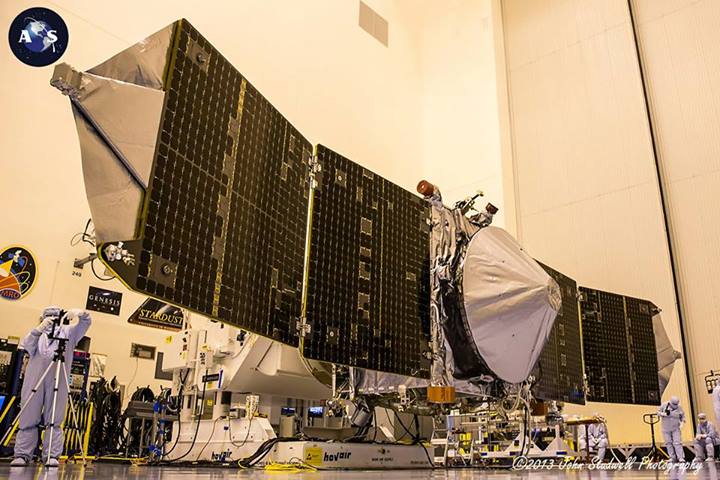
NASA’s next spacecraft destined for Mars, MAVEN, is in its final month of pre-launch processing at Kennedy Space Center in Florida. After a decade of work from people across the country, and having passed some 270 reviews, MAVEN is nearly ready to meet the Atlas-V rocket that will launch the spacecraft on a one-way trip to Mars this fall.
The $670 million Mars Atmosphere and Volatile EvolutioN mission will follow a trail to Mars blazed by numerous spacecraft that came before, helping in piecing together the puzzle of Mars’ history. MAVEN will help answer questions about how, when, and why the Red Planet’s atmosphere has nearly disappeared, leaving the planet a dead, dry, desolate landscape. MAVEN, however, will not land on the surface, but will instead position into an elliptical orbit around Mars to—for the first time—thoroughly study the Martian upper atmosphere.
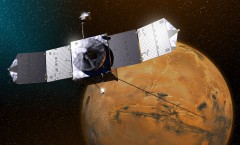
“A better understanding of the upper atmosphere and the role that escape to space has played is required to plug a major hole in our understanding of Mars,” said Bruce Jakosky, principal investigator for MAVEN at the Laboratory for Atmospheric and Space Physics at the University of Colorado Boulder. “We’re really excited about having the opportunity to address these fundamental science questions. MAVEN is not going to detect life, but it will help us understand the climate history of Mars, which is the history of its habitability.”
The spacecraft will measure the current rate of escape of atmospheric gas to space, providing information about the relevant processes to allow extrapolation backward in time to determine how much of the Martian atmosphere has been lost over the eons. Understanding the role that loss of atmospheric gas played in changing the Martian climate should shed more light on whether or not Mars was a habitable world at some point. If Mars was habitable in its ancient history, when was it, and for how long was Mars habitable before Martian Armageddon?
Currently, the 1,991-pound spacecraft (5,400 pounds once fueled) is undergoing a rigorous schedule of final testing in the Payload Hazardous Servicing Facility at KSC. Thorough tests of software and hardware systems, inspection and cleaning of the solar panels, verification tests of the various spacecraft subsystems and payloads, and readiness reviews are all being conducted in preparation for a Nov. 18 launch attempt. A launch dress rehearsal is planned for early October and will be followed by final spin balance testing and fueling (Hydrazine propellant) before being placed atop a 200-foot-tall Atlas-V 401 rocket.
http://youtu.be/GLrzH-Rnr1c
Video Credit: NASAexplorer
“We’re in the final stage of preparing for launch,” said Jakosky. “All of the science instruments are complete and on the spacecraft. We are on schedule and we are on budget.”
The 37-foot, bus-size spacecraft (with solar panels deployed) was shipped on a U.S. Air Force C-17 transport from Buckley Air Force Base in Colorado to KSC on Aug. 2. Lockheed Martin Space Systems, located near Denver, designed and built the spacecraft and is responsible for testing, launch processing, and mission operations.
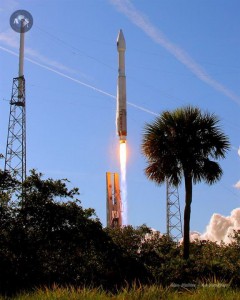
United Launch Alliance is providing the Atlas-V rocket launch vehicle, and while the spacecraft continues preparations for launch, ULA is busy preparing their rocket at Cape Canaveral Air Force Station Space Launch Complex-41. ULA will take over responsibility for the MAVEN spacecraft from Lockheed in early November, at which point MAVEN will be encapsulated inside the rocket’s payload fairing and moved to SLC-41 for final launch preparations—assuming no unexpected problems occur over the next few weeks.
“We have a three-week launch window that starts on Nov. 18,” said Jakosky. “If we miss that window we have to wait another 26 months, so you can imagine the team is working really hard to be ready. Hopefully we will launch during the first minute of the first day.”
MAVEN’s three-week launch window of opportunity opens at 1:28 p.m. EST Nov. 18, with a two-hour launch window available on each day during those three weeks. Once launched, MAVEN will take 10 months to push through the emptiness between our worlds, arriving at Mars on Sept. 22, 2014. It will take five weeks for the spacecraft to get into its final science-mapping orbit, test the instruments, and test science mapping sequences. MAVEN will then be ready to begin its one-Earth-year primary mission.
At its closest point to the planet, the spacecraft will be 93 miles above the surface, allowing MAVEN to sample the gas and ion composition of the Martian upper atmosphere directly on each orbit. Five “deep dives” are planned to place MAVEN even closer to the surface (77 miles), which will provide information down to the top of the well-mixed lower atmosphere, giving scientists a full profile of the top of the atmosphere. At its highest point MAVEN will be more than 3,728 miles above the surface, allowing for ultraviolet imaging of the entire planet.
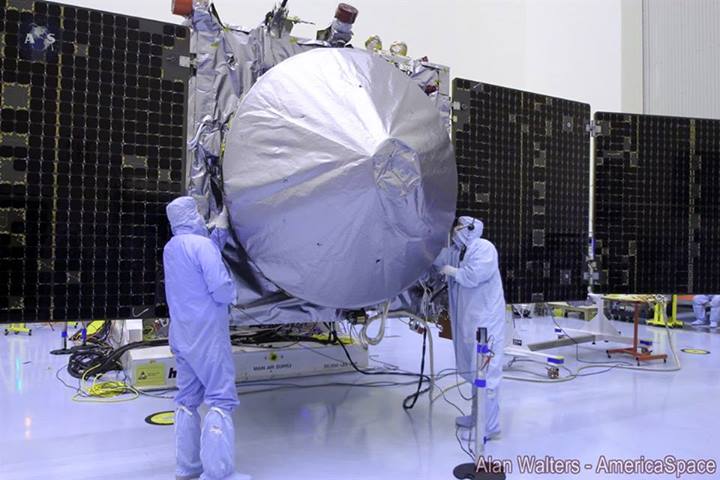
“MAVEN is going after something the others haven’t,” said David Mitchell, MAVEN’s project manager for NASA’s Goddard Spaceflight Center in Maryland. “It’s going to look at the current composition of the upper atmosphere and how solar storms and other factors changed the atmosphere. We’ll then be able to project back in time to see how it was in an earlier epoch. Scientists believe the planet has evolved significantly over the past 4.5 billion years. It had a thicker atmosphere and water flowing on the surface. It wasn’t like Earth, but it was not like it is today.”
MAVEN will join three other NASA spacecraft currently orbiting the Red Planet on their own missions (Mars Odyssey, Mars Express, and the Mars Reconnaissance Orbiter). Two other vehicles are currently exploring the surface, the rovers Opportunity and Curiosity. All six spacecraft will work to do their own part in piecing together the puzzle of Mars’ history, helping to answer questions about water, habitability, and—ultimately—whether or not life ever had a chance to thrive before the atmosphere withered away and sterilized the planet.
“There’s something about going to another planet that’s very exciting,” Mitchell said. “When you’re talking about going to Mars, it isn’t hard to get great people to come work the job. And, ultimately, the mysteries that MAVEN will help decipher should be a treasure trove for the science community.”
– Want to keep up-to-date with all things space? Be sure to “Like” AmericaSpace on Facebook and follow us on Twitter: @AmericaSpace
BELOW IS OUR PHOTO GALLERY FROM FRIDAY’S MAVEN MEDIA EVENT AT KENNEDY SPACE CENTER. ALL PHOTOS CREDIT: ALAN WALTERS, MIKE KILLIAN, AND JOHN STUDWELL / AMERICASPACE
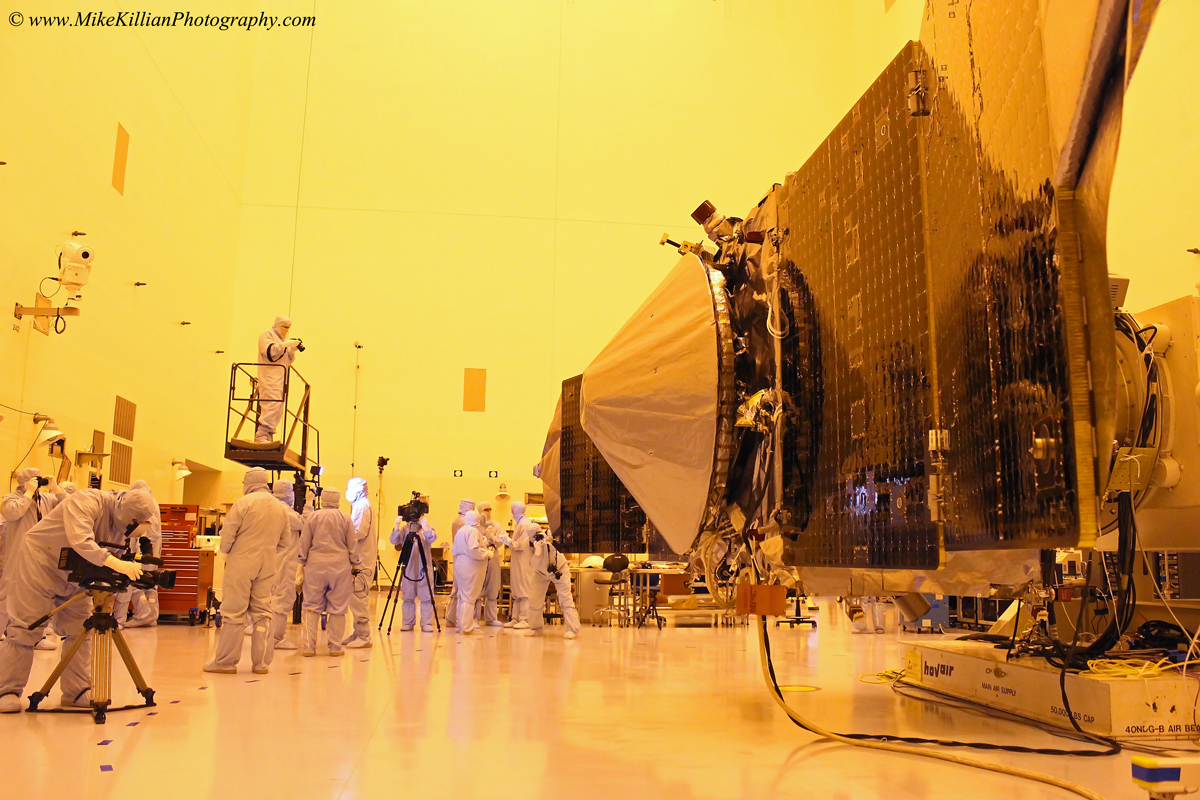
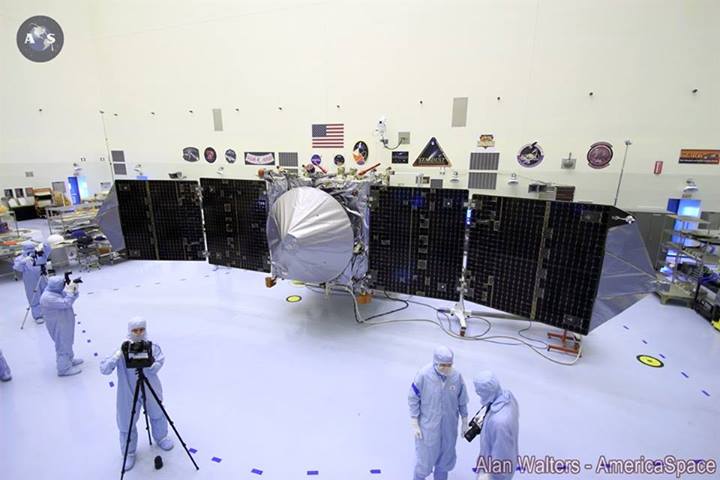
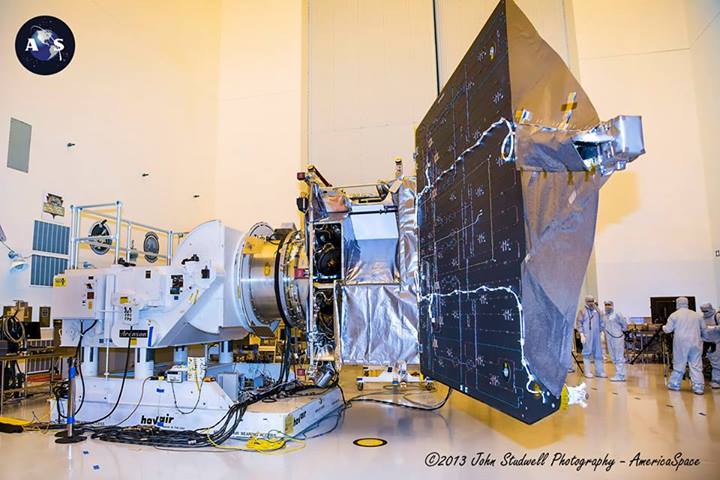
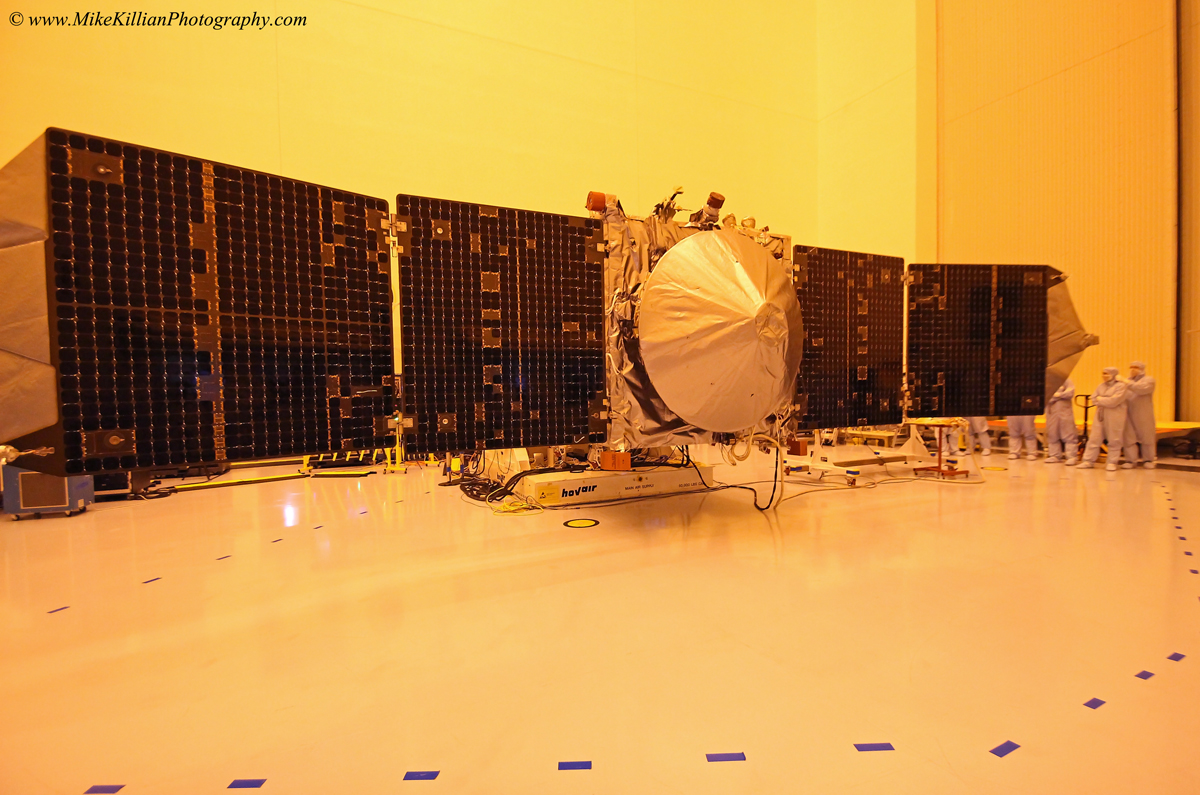
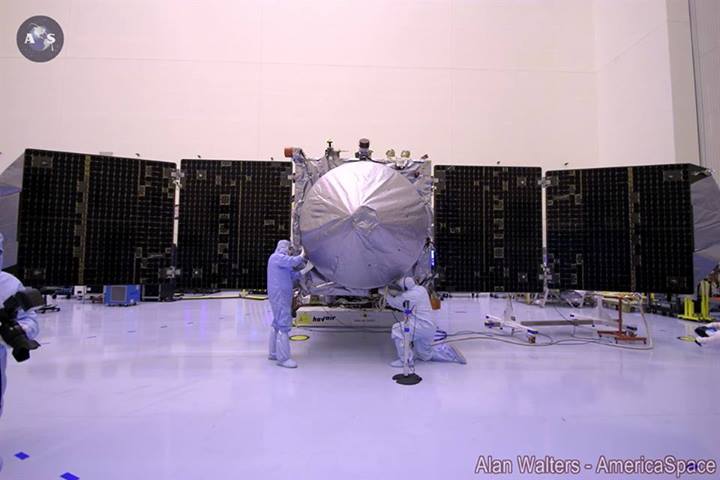
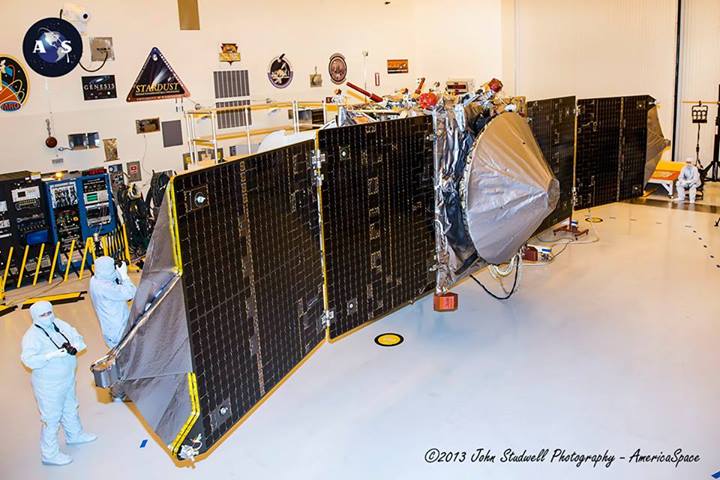
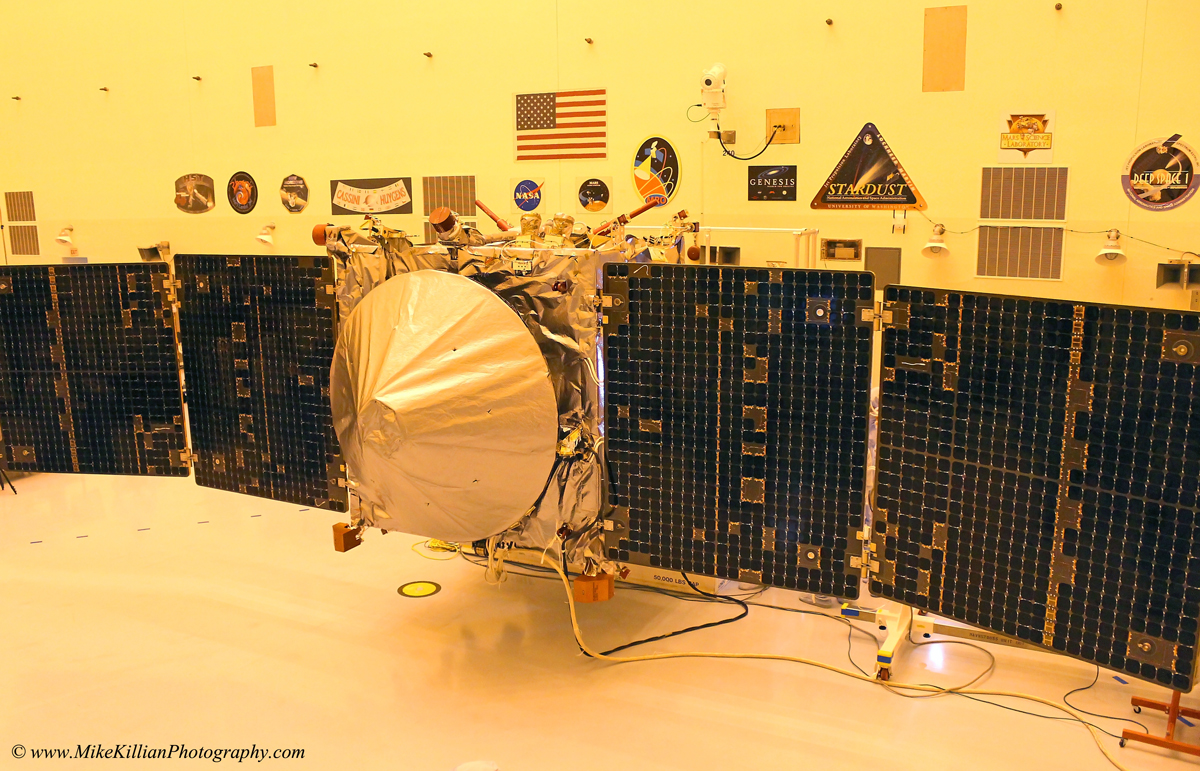
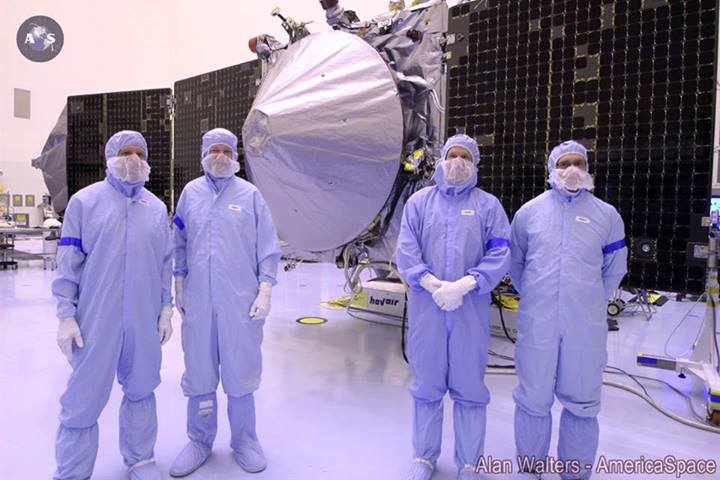
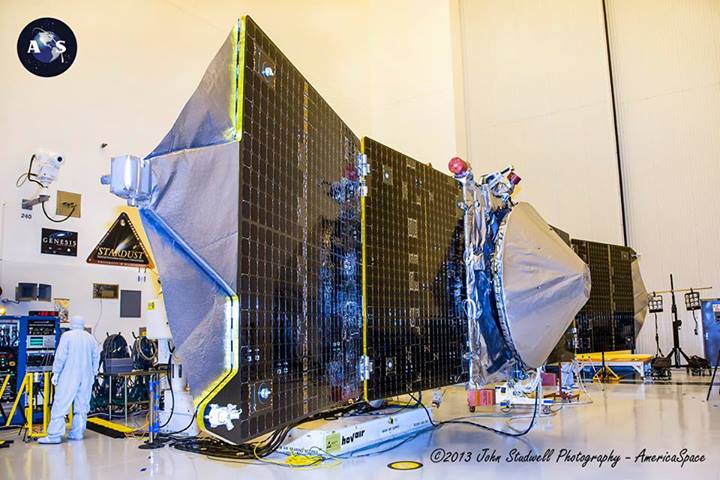
Missions » MAVEN »




It will only fly if the US Government agrees a deal on the budget before the end of today (30th Sept) – otherwise NASA goes into furlough until a deal is done.
Sad but fact.
Stuart Hurst
Exactly right Stuart, and if NASA goes into a furlough that prevents the launch as scheduled in November, the next launch window will be in two years. Bloody wonderful.
The issue of gov’t shut down was intentionally left out of the article, as it is supposed to focus on MAVEN and the mission’s processing, not the launch itself. Should a shut down occur, you can count on information to be published here regarding how it will affect MAVEN and other NASA projects.
I’m still clenching my fists in anger, about this ridiculous situation.
We appreciate you every other beneficial weblog. Wherever in addition may well I get that sort expertise coded in this kind of great way? I get a assignment that I’m just now taking care of, and I’ve ended up in the watch out for such information.